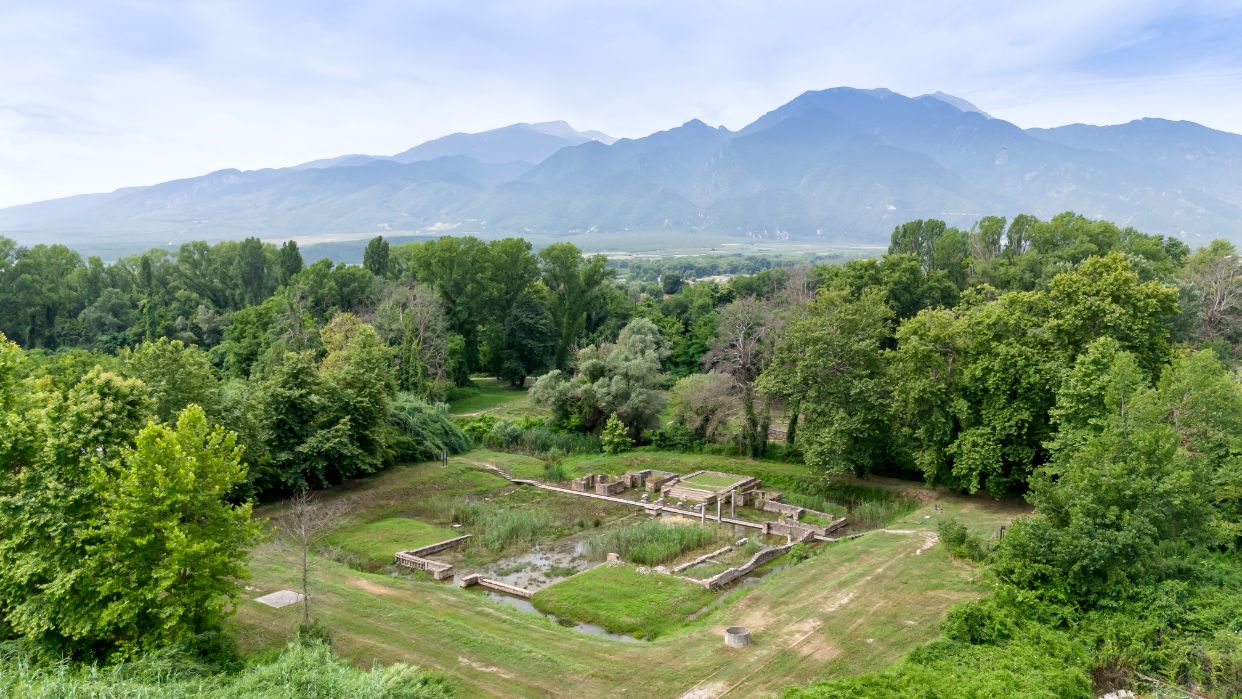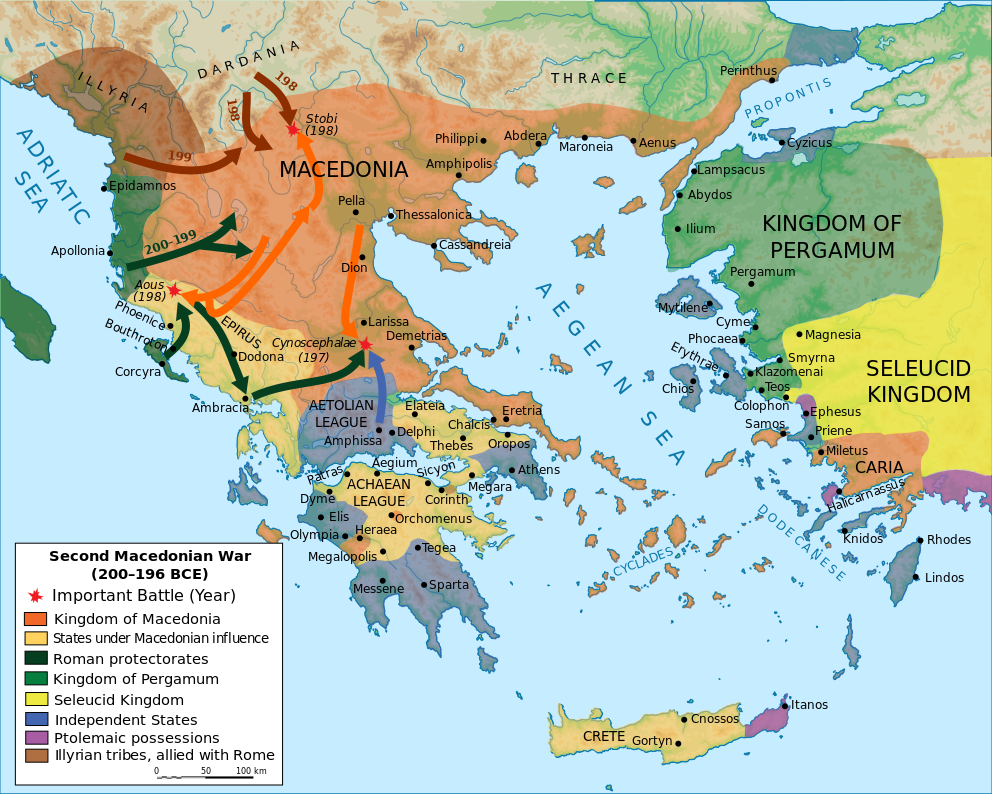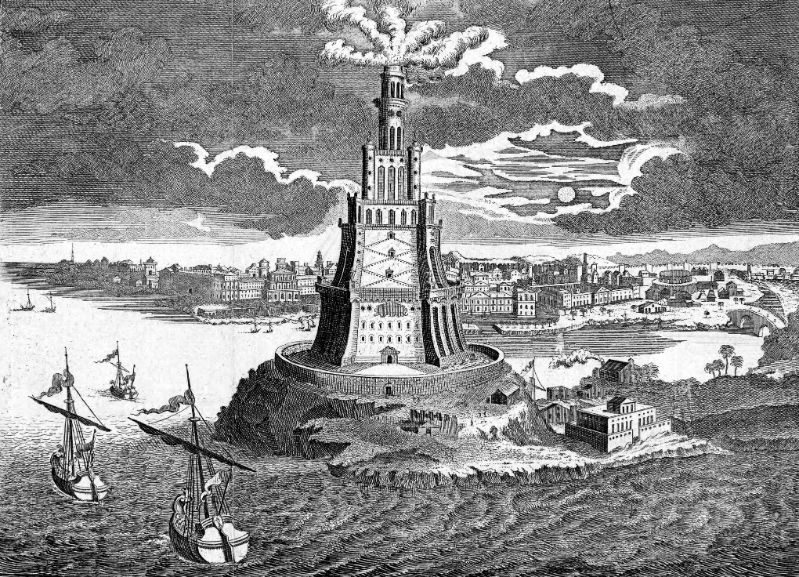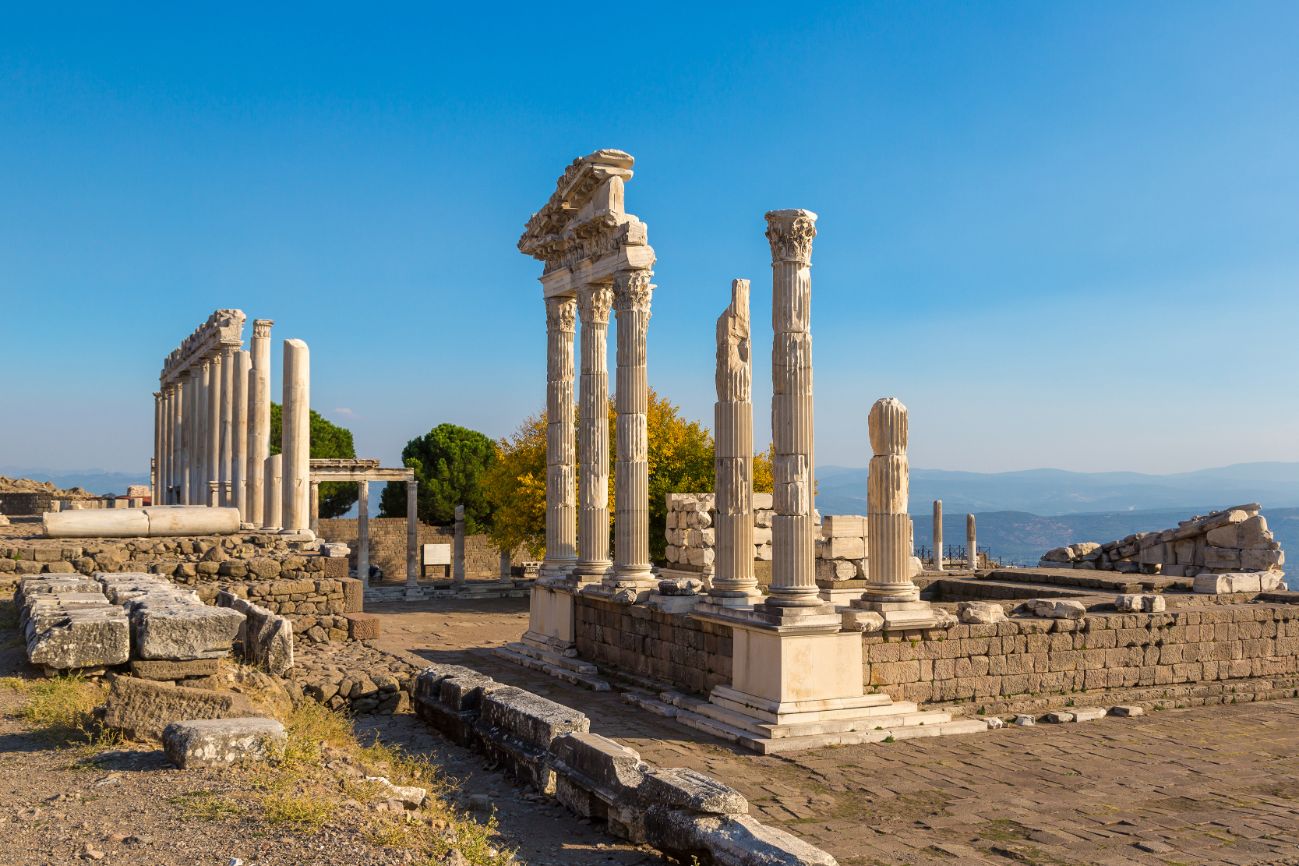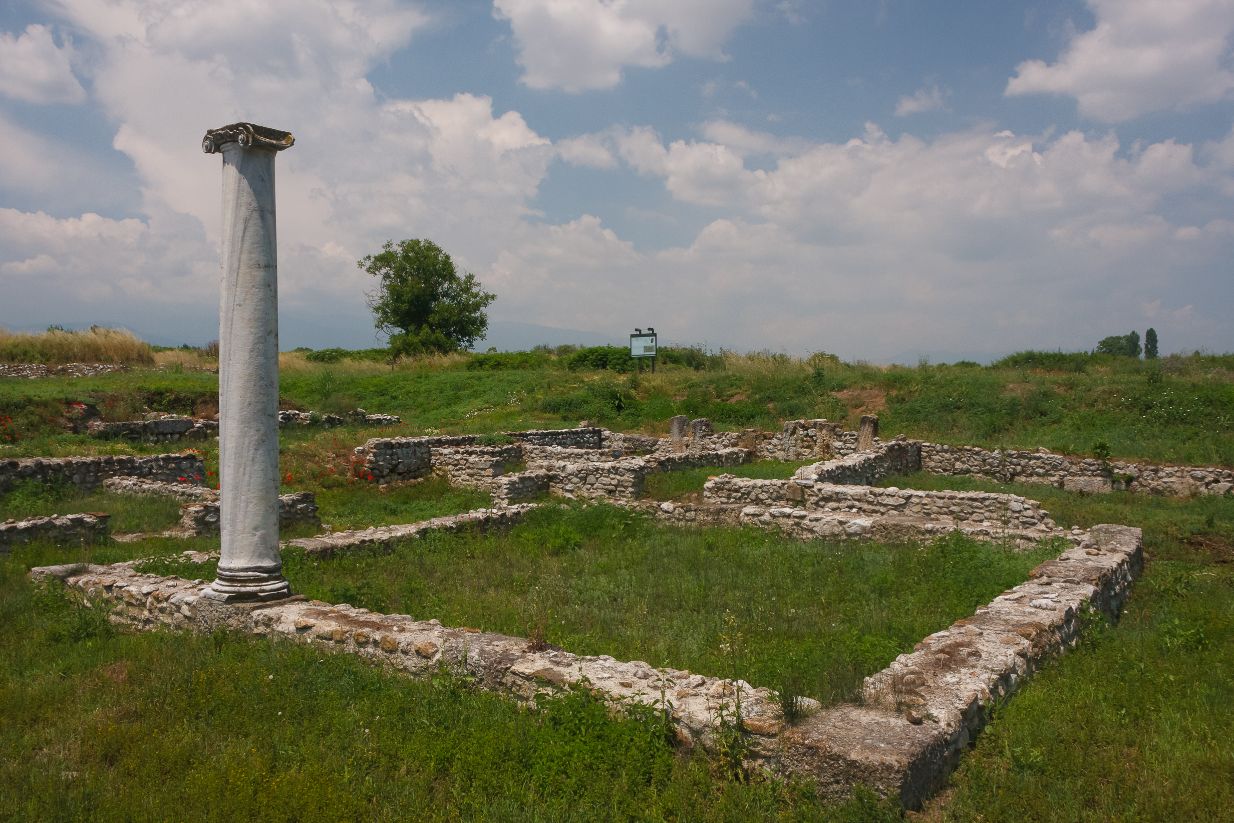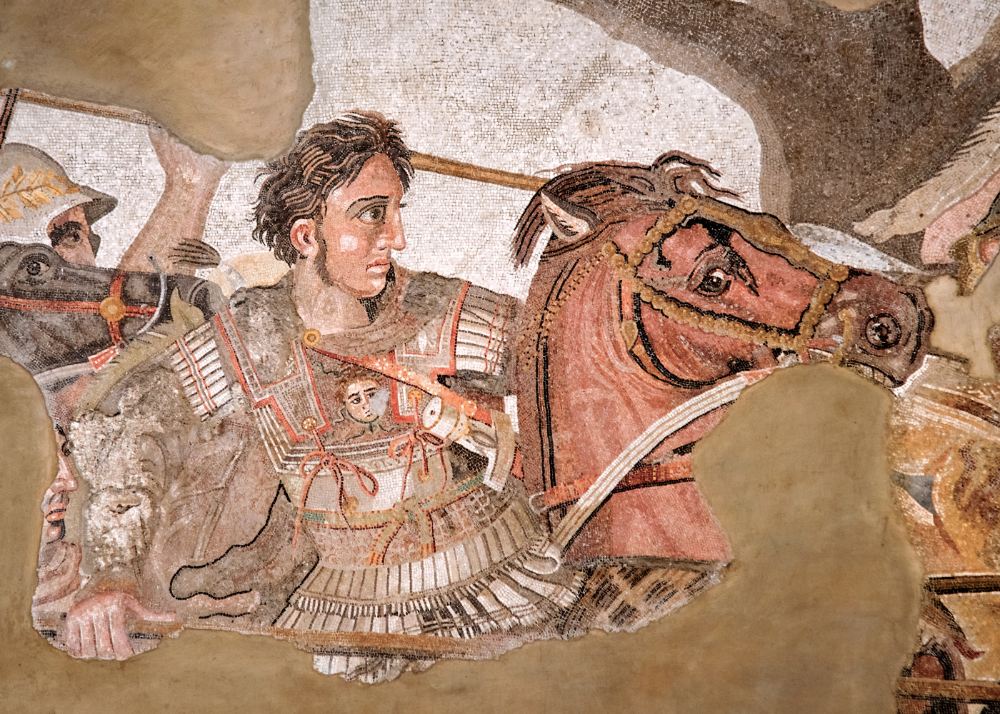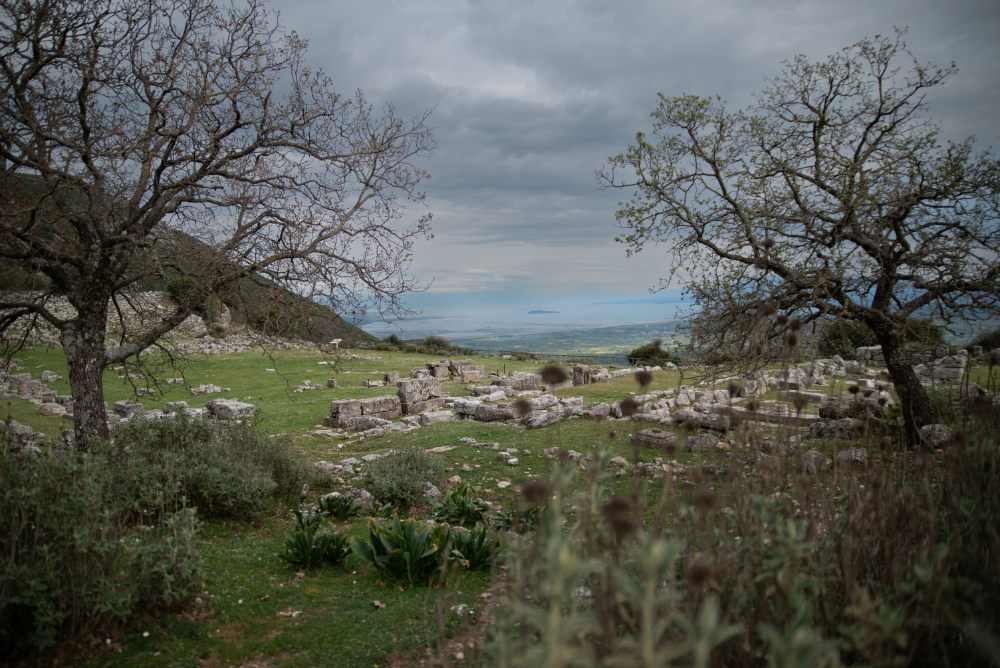Exploring the Ancient Sanctuary at the Foot of Mount Olympus
The Archaeological Park of Dion, located at the base of Mount Olympus in northern Greece, is one of the most significant archaeological sites in the region. The ancient city of Dion was dedicated to the worship of Zeus, the king of the Greek gods, and was a major religious and cultural center during the Hellenistic and Roman periods.
Dion’s strategic location near Mount Olympus made it a prominent site for both religious and political events. The city flourished under the reign of Philip II and his son, Alexander the Great, who were known to have celebrated military victories and religious ceremonies at the sanctuary. The city was also an important site during the Roman period, with many structures built in the Roman architectural style.
The Archaeological Park of Dion features impressive ruins, including temples, theaters, and baths, offering visitors a glimpse into ancient life. Notable among these is the Temple of Zeus, the city’s most significant religious structure. The theater of Dion, still partially preserved, once hosted dramatic performances and public events. Mosaics and sculptures found in the area depict gods, heroes, and daily life, providing valuable insight into ancient Greek culture.
Today, the park serves as a museum and archaeological site, attracting visitors from around the world. It provides a unique opportunity to explore the spiritual and historical significance of Dion, a city that was once at the heart of ancient Greek and Roman civilization.

